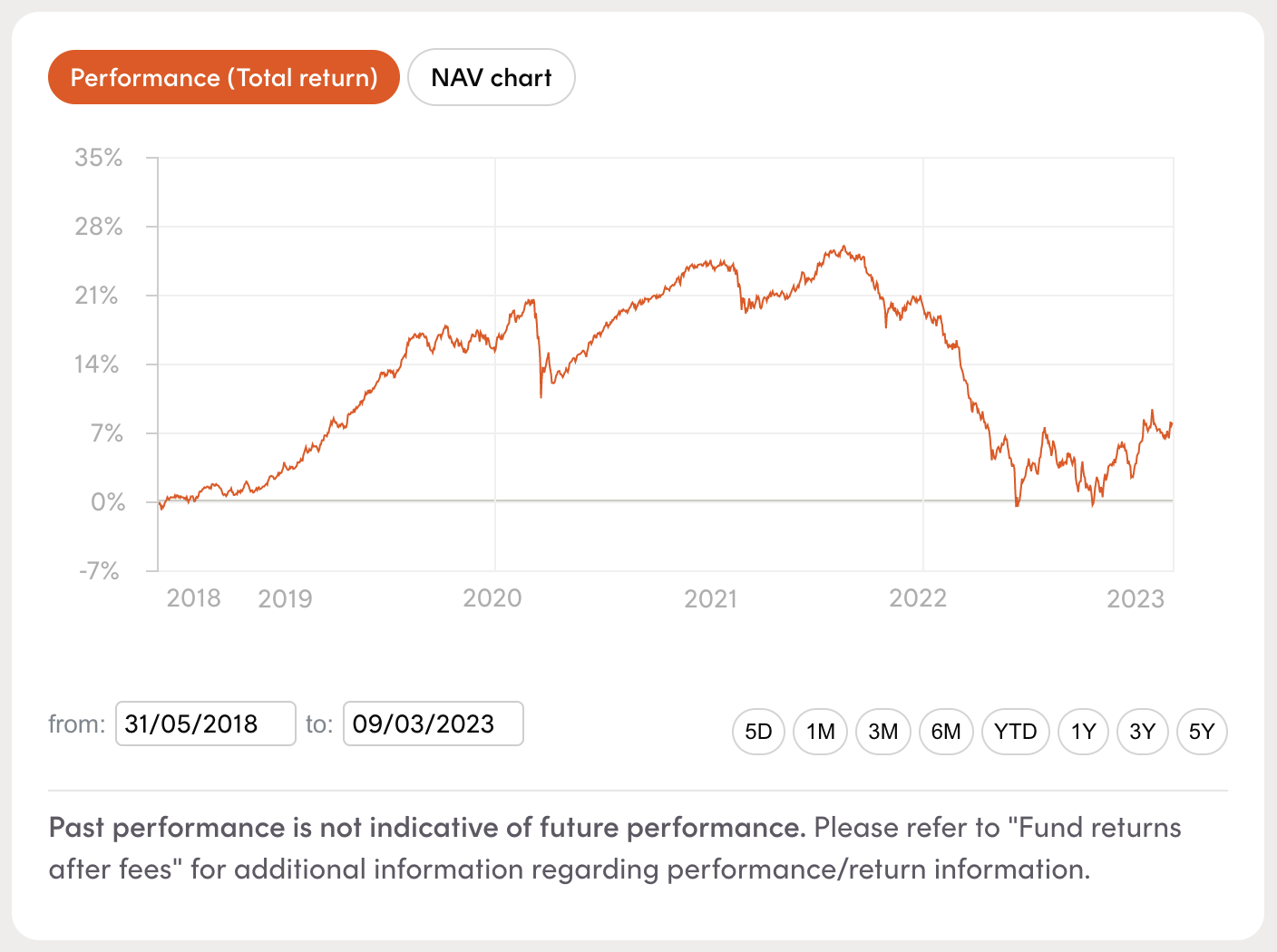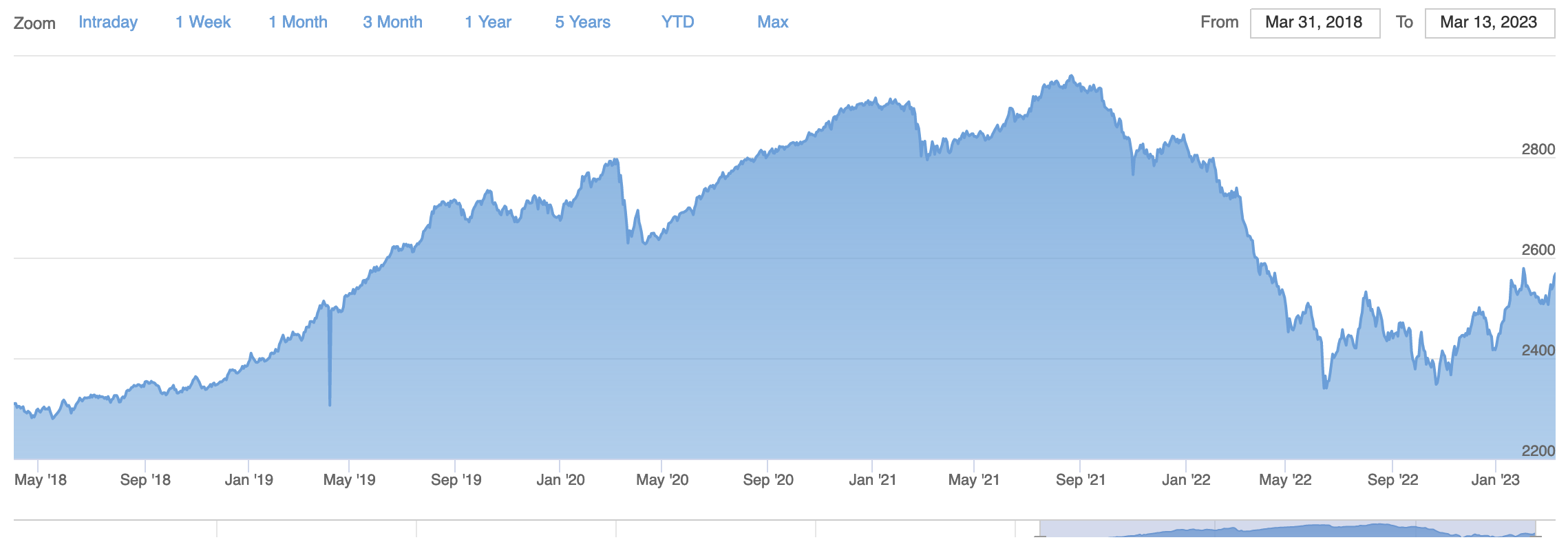
Bond ETF analysis continued
A Look at CRED performance and composition
Tuesday 14 March 2023 at 11:00:00 am AEDT 3 min readPlease click on any photo to view in a lightbox. Use arrow keys or swipe to navigate.
 CRED total return
CRED total return  CRED index
CRED index Continuing my series on analysing ETF performance, let’s look more closely at how a typical bond ETF might perform. For this analysis, I am selecting Betashares’ Australian Investment Grade Corporate Bond ETF (CRED). Again, I am not picking on Betashares, the behaviour of other bond ETFs would no doubt be similar.
The reason I am selecting CRED is because the underlying index (Solactive Australian Investment Grade Corporate Bond Select TR Index) has a simple methodology - it consists of 50 corporate bonds (ranked by quality and option adjusted spread) with equal weightings. Other indices, such as Bloomberg’s Australian Composite Bond has a much larger universe and hence more difficult to analyse.
The issue we saw in the previous analysis (where a bond ETF may result in significant negative total return in a falling market with rising interest rates) is also present in CRED.
It is tempting to tolerate this performance because the ETF performance is simply reflecting current market conditions and on the surface appear to track the index performance reasonably well. This is by design: ETF fund managers monitor tracking error closely and ensures their funds track the underlying index with minimal deviation.
But does the ETF truly track the index in terms of portfolio composition?
Consider this: during good times in a rising market, the funds receives regular net inflows and can just buy more bonds more or less in accordance to index weight.
But in a falling market, where there is a net redemption, the fund is eventually forced to sell assets (bonds). Unlike the equity market, individual bonds can be quite illiquid and it may be quite difficult for the fund to sell assets in accordance to the desired weighting. Hence a fund is forced to choose between two alternatives: sell the more liquid bonds (which will degrade the overall quality of the portfolio over time) or try to get rid of the illiquid bonds, which may impact the underlying liquidity and and further reduce the market value of these assets, as well as incur additional transaction costs.
Over time, therefore, one would expect the aftermath of a sustained falling market (such as what happened in 2022) will result in an ETF with a portfolio that significantly deviates from the idealised index weightings.
And that has indeed happened with CRED. If I analyse the current portfolio holdings, the weightings of the bonds range from 1% to 3% instead of the ideal (2%). This means over time the credit risk of the portfolio can deviate significantly from the notional index risk even if the total return may not deviate that much.
What does that mean for an investor? Be careful of buying ETFs where the underlying physical assets may not be liquid, as over time (particular after a significant market fall or times of crisis) the ETF may not reflect the underlying index well, even if tracking error appears to be low. This is not just bond ETFs but any ETF (particularly the thematic ones).